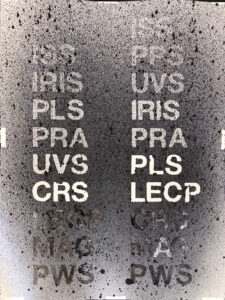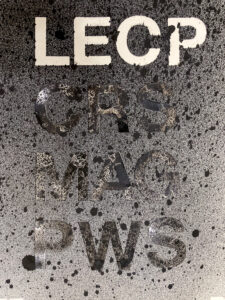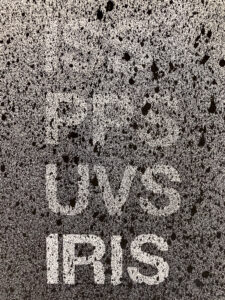This work explores a time-based production process that mirrors the time-based loss of function experienced by the Voyager spacecraft. I used letter stencil masks to create lists of the scientific instruments (abbreviated) on board each Voyager spacecraft. The mylar stencils were positioned in two columns, representing the two spacecraft, on a large sheet of watercolor paper. One light layer of India ink was sprayed over the sheet for each year the spacecraft has been in operation, and the stencil masks for each scientific instrument were removed at the appropriate year/layer it was powered down. The final work represents the spacecrafts’ current status, with still-operating instruments remaining masked for future removal, and an indicator of the history of the other scientific instruments represented by how clear or faint they are (i.e., how many layers of ink, one for each year, have accumulated over their representation in the work). This work connects conceptual and material elements of the work through the processes by which it is made.
The Voyager 1 and 2 spacecraft, launched in 1977, have been traveling away from Earth at 1 million kilometers per day for almost 50 years. They have traveled farther outside our solar system than any other human-made objects. To continue their interstellar mission for as long as possible, given that their plutonium-based generators produce less electricity every year, the scientific instruments aboard each spacecraft have been turned off one by one. To me, the deliberate reduction in sensor functioning that has been accepted in exchange for extending the duration of the mission is both poignant and inspiring, and is resonant with our experience of human aging.
PPS=Photopolarimeter Subsystem
ISS= Imaging Science Subsystem
IRIS=Infrared Interferometer Spectrometer and Radiometer
PLS=Plasma Science
PRA=Planetary Radio Astronomy
UVS=Ultraviolet Spectrometer
CRS = Cosmic Ray Subsystem
LECP= Low-Energy Charged Particles
MAG = Magnetometer
PWS = Plasma Wave Subsystem.



